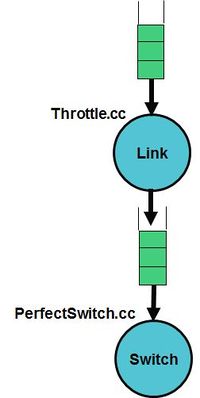Difference between revisions of "Simple"
From gem5
(Created page with "=== Simple Network === The simple network models hop-by-hop network traversal, but abstracts out detailed modeling within the switches. The switches are modeled in simple/Per...") |
m (→Simple Network) |
||
| Line 12: | Line 12: | ||
** '''endpoint_bandwidth''': Bandwidth at the end points of the network in 1000th of byte. | ** '''endpoint_bandwidth''': Bandwidth at the end points of the network in 1000th of byte. | ||
** '''adaptive_routing''': This enables adaptive routing based on occupancy of output buffers. | ** '''adaptive_routing''': This enables adaptive routing based on occupancy of output buffers. | ||
| + | |||
| + | |||
| + | '''More details of the gem5 Ruby Interconnection Network are [[Interconnection_Network|here]].''' | ||
Revision as of 01:26, 25 September 2016
Simple Network
The simple network models hop-by-hop network traversal, but abstracts out detailed modeling within the switches. The switches are modeled in simple/PerfectSwitch.cc while the links are modeled in simple/Throttle.cc. The flow-control is implemented by monitoring the available buffers and available bandwidth in output links before sending.
- Configuration:
Simple network uses the generic network parameters in Network.py. Additional parameters are specified in simple/SimpleNetwork.py:
- buffer_size: Size of buffers at each switch input and output ports. A value of 0 implies infinite buffering.
- endpoint_bandwidth: Bandwidth at the end points of the network in 1000th of byte.
- adaptive_routing: This enables adaptive routing based on occupancy of output buffers.
More details of the gem5 Ruby Interconnection Network are here.
